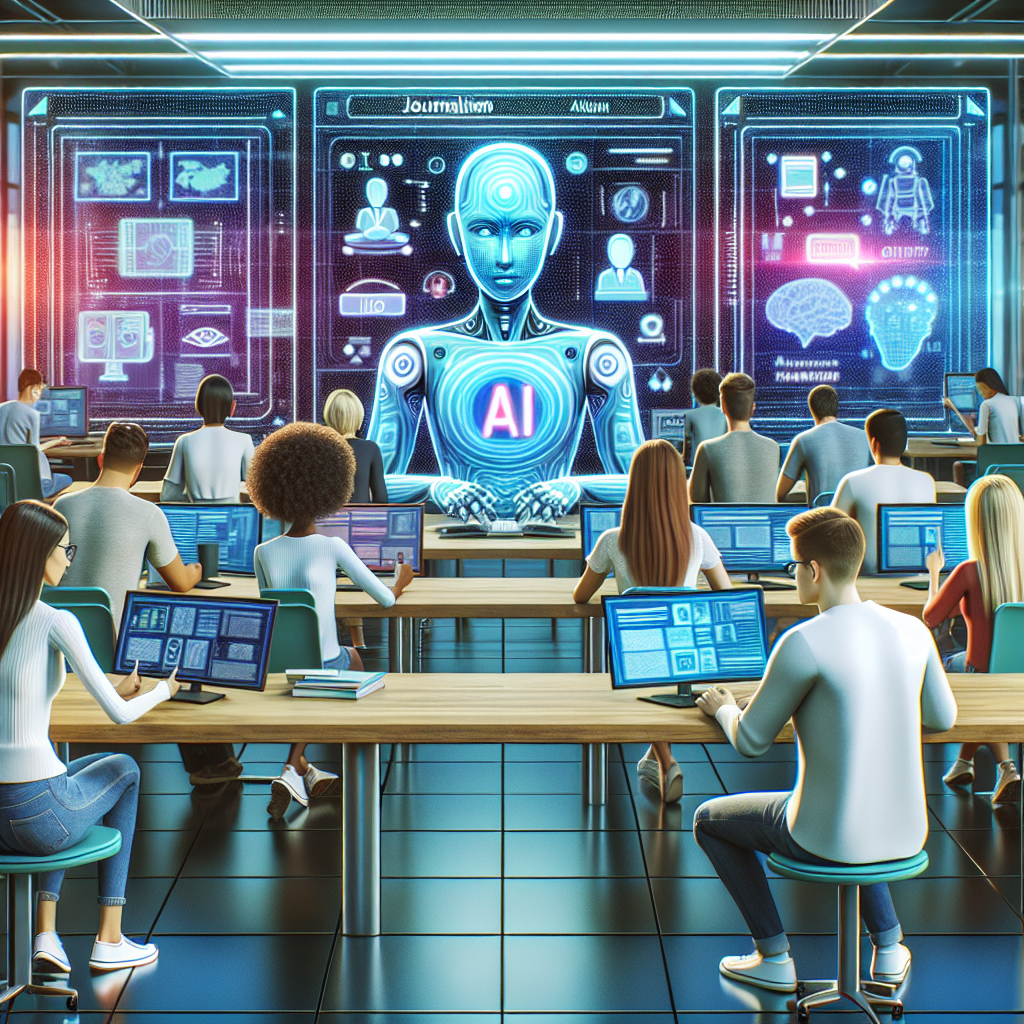The future of journalism education is rapidly evolving with the integration of artificial intelligence (AI) technology. As the field of journalism continues to adapt to the digital age, educators are seeking innovative ways to prepare students for the changing landscape of the industry. AI has the potential to revolutionize journalism education by providing students with new tools and skills to navigate the complex media environment.
One of the key benefits of integrating AI into journalism education is the ability to analyze large amounts of data quickly and accurately. AI algorithms can sift through vast amounts of information to identify trends, patterns, and insights that would be difficult for humans to uncover on their own. This can help journalists to better understand their audience, track the impact of their stories, and make more informed decisions about their reporting.
Another advantage of AI in journalism education is the opportunity for students to learn new skills in data journalism and computational storytelling. These emerging fields use AI tools to visualize data, create interactive graphics, and develop multimedia storytelling projects. By incorporating AI into their curriculum, journalism programs can equip students with the technical skills they need to succeed in the digital media landscape.
AI can also enhance the quality of journalism education by providing students with personalized feedback and guidance. AI-powered tools can analyze students’ writing, editing, and reporting skills to identify areas for improvement and suggest ways to enhance their work. This can help students to develop their skills more quickly and effectively, leading to better outcomes in the classroom and in their future careers.
Despite the potential benefits of integrating AI into journalism education, there are also challenges and concerns to consider. One of the main concerns is the potential for AI to replace human journalists and undermine the integrity of the profession. While AI can automate certain tasks and streamline workflows, it cannot replicate the critical thinking, creativity, and ethical judgment that human journalists bring to their work. Educators must strike a balance between teaching students how to use AI tools effectively and ensuring that they maintain the core values and principles of journalism.
Another challenge is the need for journalism educators to stay abreast of the latest developments in AI technology and incorporate them into their curriculum. AI is a rapidly evolving field, and educators must be proactive in adapting their teaching methods and materials to keep pace with these changes. This requires investments in training, resources, and infrastructure to support AI integration in journalism education.
To address these challenges and maximize the benefits of AI in journalism education, educators can take several steps. One approach is to collaborate with industry partners and AI experts to develop cutting-edge curriculum and training programs. By working closely with professionals in the field, educators can ensure that their students are learning the most relevant and up-to-date skills.
Another strategy is to provide students with hands-on experience using AI tools in real-world journalism projects. By incorporating AI into reporting assignments, students can gain practical skills and insights that will prepare them for the demands of the industry. This experiential learning approach can help students to see the value of AI in journalism and motivate them to explore new opportunities for innovation.
Overall, the future of journalism education is bright with the integration of AI technology. By harnessing the power of AI tools, educators can enhance the quality of their programs, equip students with new skills, and prepare them for success in the digital media landscape. With careful planning, collaboration, and innovation, journalism education can thrive in the age of AI and continue to produce skilled and ethical journalists for the future.
FAQs:
Q: Will AI replace human journalists in the future?
A: While AI can automate certain tasks and streamline workflows, it cannot replicate the critical thinking, creativity, and ethical judgment that human journalists bring to their work. AI is a tool that can enhance the work of journalists, but it cannot replace them entirely.
Q: How can journalism educators integrate AI into their curriculum?
A: Educators can collaborate with industry partners and AI experts to develop cutting-edge curriculum and training programs. They can also provide students with hands-on experience using AI tools in real-world journalism projects to gain practical skills and insights.
Q: What skills will students learn by integrating AI into journalism education?
A: Students will learn skills in data journalism, computational storytelling, and multimedia storytelling projects. They will also develop skills in data analysis, visualization, and interpretation using AI tools.
Q: How can journalism programs stay abreast of the latest developments in AI technology?
A: Journalism programs can invest in training, resources, and infrastructure to support AI integration. They can also collaborate with industry partners and AI experts to develop cutting-edge curriculum and training programs.
Q: What are the benefits of integrating AI into journalism education?
A: AI can help students analyze large amounts of data quickly and accurately, develop new skills in data journalism and computational storytelling, and receive personalized feedback and guidance. It can also enhance the quality of journalism education and prepare students for the demands of the digital media landscape.

